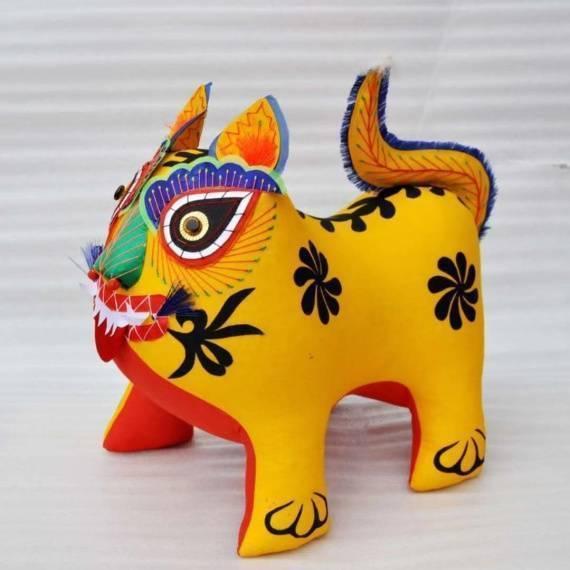
With big, round eyes, colorful patterns on the head, and a chubby body, the Lihou Tiger blends the big cat's majesty with cuteness, making it widely popular, especially among
Visitors asked questions and expressed praises for the hand-made cloth tigers as they gathered around an intangible cultural heritage products stall in a scenic area in Licheng County, north China's Shanxi Province.
The Lihou Tiger, a national intangible cultural heritage, originated from the folk custom of using tigers as totems in the Shang and Zhou dynasties (1600 BC-256 BC) and gradually evolved into its present form, intertwining elements of storytelling, straw weaving, embroidery, paper-cutting, calligraphy, and painting.
"It carries cultural connotations like blessings, protecting the house and wealth creation," said Li Linyu, a shopping guide at the stall.
In recent years, the rapid growth of China's tourism sector has injected new vitality into the promotion, inheritance and development of intangible cultural heritage.
"Many tourists came to learn about the Lihou Tiger after seeing it in the scenic areas, and my intangible cultural heritage studio has almost become a must-visit place for tourists," said Li Xiaomei, a provincial-level inheritor of the Lihou Tiger.
China has more than 100,000 representative items of intangible cultural heritage at all levels, of which 1,557 are national intangible cultural heritage items and 43 have been inscribed on the UNESCO Intangible Cultural Heritage List.
The ancient city of Xinzhou in Shanxi, with a history of over 1,800 years, has opened more than 20 intangible cultural heritage shops, featuring items like paper-cutting and dough sculpture, in its early days of operation. In June, the city welcomed over 1.03 million tourists, presenting a substantial opportunity for promoting intangible cultural heritage items.
In order to advance the integration of intangible cultural heritage and tourism, Xinzhou has rolled out rent-free policies for some intangible cultural heritage projects. For businesses that have good handicrafts and projects but lack funds, the ancient city helps them invest in opening shops.
The integration of tourism and heritage has also benefited from support at the national level. According to the country's 14th five-year plan for protecting intangible cultural heritage, a batch of experience bases and scenic spots characterized by intangible cultural heritage will be developed.
"We'll build an intangible cultural heritage study base on the Lihou Tiger in the next two years, integrating virtual reality and other technological elements to fully showcase our intangible cultural heritage, and make our base a part of tourism routes in the city," said Qiao Yanbo, chairman of Qiaolaohan textile and cotton products company in Licheng County.
Scenic spots provide a solid platform for the promotion of intangible cultural heritage, while intangible cultural heritage imbues cultural significance into scenic spots, said Geng Yeqiang, professor at the School of Economics and Management at Shanxi University.
The mode of "tourism plus intangible cultural heritage" will become a new trend, Geng added.




